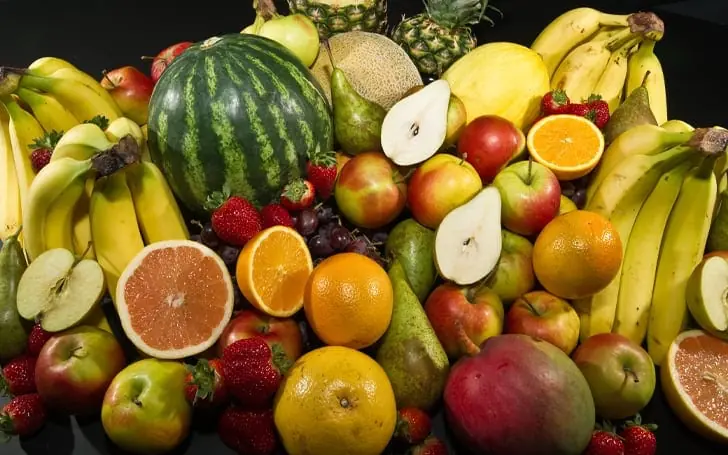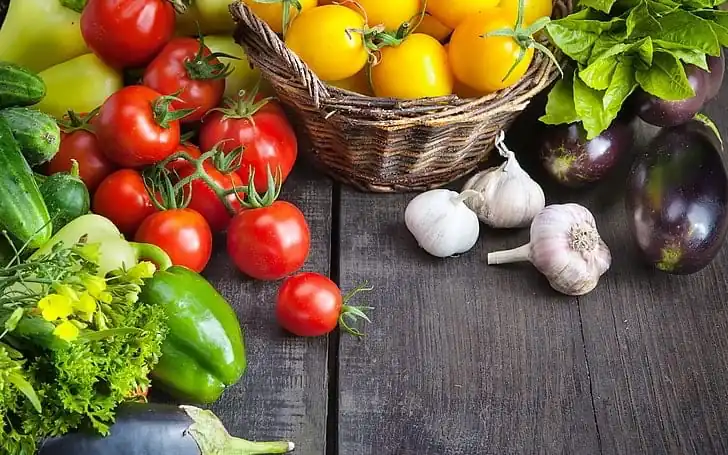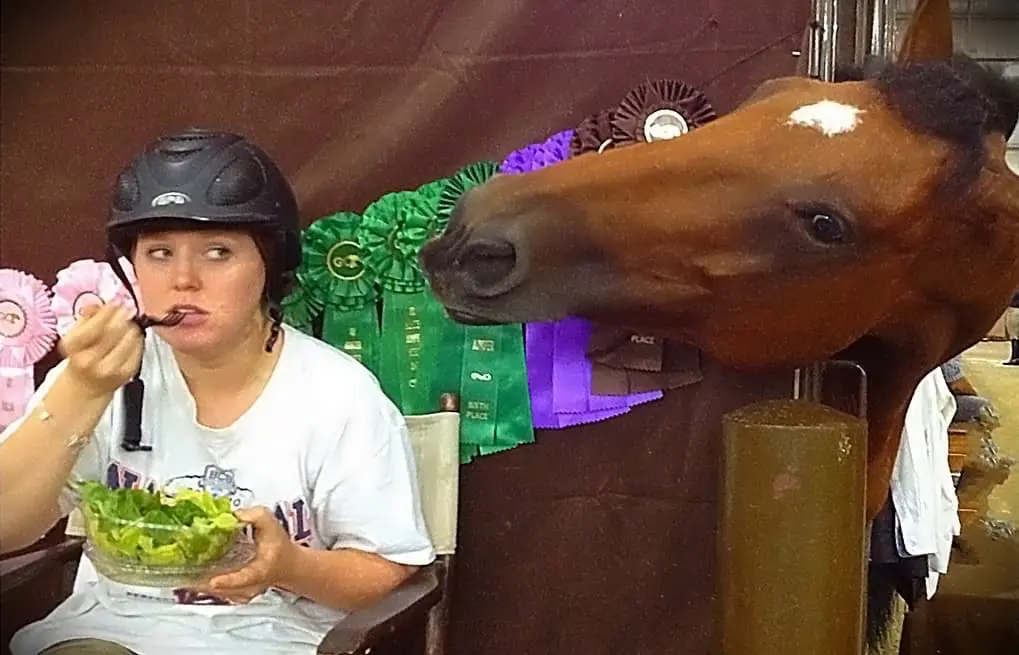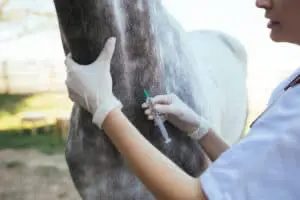Let’s be honest we all love a treat now and then and horses are no different, just like us they have a sweet tooth and will happily devour anything on offer to them but we all know that feeding too many treats has its own set of problems. From bad habits to putting on weight, feeding treats can have a negative outcome but it doesn’t need to be that way at all. If fed with consideration and responsibly, treats can have a positive effect on a horse.
What’s safe to feed to a horse as a treat?
While apples and carrots are the traditional treats that most people think of, many fruits and vegetables (except brassicas, onions, potatoes, and tomatoes as well as pitted fruits) are also safe to feed. A recent study found that many horses actually prefer bananas to apples and carrots. Whatever you choose to feed your horse it’s crucial that you cut it into smaller pieces to prevent him from choking.
Celery is a very good, if somewhat surprising, treat for horses. Not only is it low in sugar (while carrots contain around 5g of sugar per 100g and apples have around 10g of sugar) but it’s high in cellulose which means horses need to chew it. The act of chewing is satisfying to horses (and will help to reduce stress) but it also helps in the production of saliva which in turn will help to protect against gastric ulcers.
Other safe foods for horses are:
- Apricots
- Beets
- Blackberries
- Blueberries
- Cherries
- Coconut
- Figs
- Grapes
- Grapefruit
- Mangoes
- Melon
- Pears
- Plums
- Pumpkin
- Strawberries
What should you avoid feeding to horses?
While many fruits and vegetables are safe for horses to eat there are some, such as those from the brassica family (broccoli, cabbage, and kale, etc) produce a lot of intestinal gas which should be avoided at all costs.
Some of the other things that you should avoid feeding horses are:
- Lawn cutting
- Buttercups
- Avocado
- Tomatoes
- Potatoes
- Rhubarb
- Garlic
- Onions
- Chives
- Leeks
- Unpitted fruit
- Dairy produce
- Bread
- Peanuts
How many treats should you feed to a horse?
Horses have evolved to continuously eat small amounts of food so will happily eat a whole bag of apples without even thinking about it which is why you have to be responsible when feeding treats. You might think that it doesn’t matter how many carrots you feed your horse but there are a number of reasons why you should always feed treats (no matter what they are) in moderation.
A treat is just that a treat and if you feed too many then it no longer a treat and your horse won’t see it as something special, or as a reward for good behavior. This, in many cases, will lead to bad behavior because your horse will begin to expect it rather than appreciate it when he is given a treat.
We tend to forget that no matter how good or bad a treat is, it does still have a nutritional impact on your horse’s diet and feeding too much can put him off of his meals but, depending on what you’re feeding it can also upset his sensitive digestion.
How to safely feed treats WITHOUT forming bad habits
There’s nothing wrong with treating (pun intended) horses but if it’s done in the wrong way it can easily help to teach a horse bad habits. The good news though is that it’s just as easy to form good habits as it is bad ones and the dos and don’ts below will help with that.
DO reward your horse for good behavior. While horses can very quickly learn bad habits they can learn good ones just as easily and if you give your horse a treat for respecting and obeying you you’ll be reinforcing good behavior. If he stands patiently while you wash and groom him reward him with a treat.
DO use treats as part of a positive training program. When training horses you should use verbal cues followed by a clicker to let your horse know he’s done the right thing, but these can be reinforced with a treat. Without a treat, horses will learn what to do but treats can speed up that learning process.
DO put treats inside toys. You don’t always need to give your horse a treat directly, you can use a variety of horse toys to hide the treats and allow your horse to find them. This will help to stimulate him, keeping him occupied and reducing his chances of getting bored. There are a number of different toys you can buy or you can make your own.
DON’T reward bad behavior. This might sound the most obvious thing to say but, just like horses, we’re creatures of habit and can easily fall into the routine of feeding treats at the same time every day regardless of what our horses have done. While this isn’t necessarily a bad thing, if your horse is pawing the ground or begging for food then giving him a treat will inadvertently reward that behavior. Your horse will associate the treat with his actions so will be more likely to do it again, expecting another treat.
DON’T keep treats in your pockets. Horses are very smart and if you’re always giving them treats from your pocket they’ll very quickly learn that pockets equal treats. While this might not seem like a problem at first it’ll soon have your horse sticking his nose into every pocket he sees looking for treats.
DON’T always feed treats directly from your hand. There’s nothing wrong with opening your hand to produce a treat for your horse occasionally, but if you do it all the time though it can result in a nippy horse who associates hands with treats and therefore starts to nuzzle the hand looking for treats. Instead, place the treat in a bucket and offer that to your horse or place it on the ground in front of him.
DON’T feed treats to other horses without asking the owners permission beforehand. I admit that this isn’t completely linked to forming good or bad habits but unless you know the horse well it can help to shape bad habits. Although you might think you’re being kind feeding treats to another horse but not all owners like to feed treats; they may not give their horses treats due to digestive or health issues or simply because they don’t want to form habits (good or bad).
Feeding treats as part of a balanced diet
Don’t forget that even though you may not be feeding many treats to your horse they will still have an impact on his diet and that should always be taken into account, especially if your horse is an easy keeper.
It’s also worth noting that our definition of a treat isn’t always the same as what horses think of as treats. Yes, many horses do have a sweet tooth just like us but they are also perfectly happy with a handful of chaff if it’s fed as a treat rather than as part of the feed.
Using treats as a distraction
I’ve talked a lot about feeding treats at the right time and using them to reward good behavior but in some circumstances, they can be used as a distraction method. If your horse gets anxious when the farrier turns up or tries to hide from the veterinarian when his vaccinations are due, then you can use treats to turn this negative experience into a more positive one.
If you know your horse is going to be anxious about a particular event then giving him a treat beforehand will help to calm him and reduce his stress levels. Afterward, make sure you give your horse another treat, this will help him to associate the event with something positive and, in time, reduce his anxiety.
Feeding treats to competition horses
If you compete with your horse then you need to make sure the treats you’re feeding won’t cause him to test positive for any prohibited substances. Chocolate is one such food that you shouldn’t feed to competition horses, while it can be fatal to horses if they eat too much, small amounts have a similar effect to caffeine and as such can result in a failed drug test.
To feed or not to feed?
All owners (and horses) are different and everybody has their own opinion on whether treats are a good or bad thing so it’s important to keep in mind that there’s no right or wrong when it comes to feeding treats. All that really matters is that your horse is healthy and happy, anything else is a personal choice.
Further reading
- How coconut oil can benefit horses
- Surprising foods your horse should eat
- Can horses eat watermelon?
- Are bananas safe for horses?
- Feeding a hard keeper on a budget
- 25 things horses should NEVER eat
- Horse food types explained
- Homemade horse treat recipes
- Do horses need supplements?
- Feeding a horse without pasture
I hope you found this article helpful. If you did I’d be grateful if you could share it please as it would really help me.
Recommended products
Over the years I have tried hundreds of different horsey products, from various blankets and halters to different treats. Some I’ve loved, others I’ve hated but I thought I’d share with you my top all-time favorite products, the ones I never leave the yard without. I’ve included links to the products (which are in no particular order) that I really think are great.
- Horse Knots by Reference Ready – If you’re like me and enjoy pocket reference guides then you’ll love this knot tying guide. These handy cards can easily fit in your pocket or attach to the saddle for quick reference. They’re waterproof, durable and are color coded to make them easy to follow.
- Mane ’n Tail Detangler – Even if you never show your horse you’ll need to detangle his tail from time to time (and possibly his mane too) which is always a challenging chore! I’ve found that if I run a little bit of detangler through my horse’s tails every few days it stops them from getting matted up and makes combing them easy, even if they’re coated in mud. I don’t know if I should admit to this or not but it also works wonders on my hair.
- TAKEKIT Pro clippers – Over the years I’ve tried a lot of different clippers and while some were obviously better than others I found these to be by far the best. They are heavier than a lot of other clippers but for me, that’s a good thing, it makes them feel more sturdy and hardwearing. On top of that they have a range of speeds so are just as good for clipping your horse’s back as they are his face. I also like the fact that they come in a handy carry case but that’s not for everybody. The company that makes them is super good and incredibly helpful too, a real bonus these days. The only thing I wasn’t keen on was the fact that it doesn’t come with any oil, but that’s not a major problem as it’s not difficult to buy lubricant.
- Shire’s ball feeder – There are so many boredom buster toys out there but I like to use these every day, regardless of whether or not my horses are bored. I find that it helps to encourage my horses to problem solve by rewarding them with treats (or pieces of fruit) but it also mimics their natural grazing behavior which helps to keep them calm and de-stressed.
- Horse safe mirror – This is a strange one that many people are surprised about but I like to put horse safe mirrors in the trailers as well as in the quarantine stalls. It helps to prevent the feeling of isolation by giving the impression of other horses being around. Being herd animals horses can get extremely stressed when they feel that they’re on their own but with these stick-on mirrors, they believe that at least one other horse is with them.
- Rectal thermometer – I know this isn’t glamourous at all but it’s vital for your horse’s well-being to be able to check their temperature and a rectal thermometer is the easiest way of doing this which is why I’ve added it to the list.
Shopping lists
I’ve also put together a few shopping lists of essential items that I’ve found helpful over the years. I’ve broken the lists down into different categories rather than put everything in one massive list 😉





